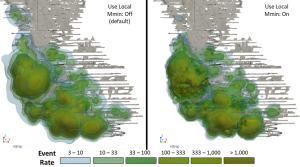mXrap News and Events
mXrap Blog
Upcoming Events

Geotechnical Design for Underground Metalliferous Mines Course
This course is designed to develop specific underground metalliferous mining geomechanics design competencies for engineers to enhance their contribution to mine site geomechanics programs.
- Perth WA, Australia
- 5 - 9 May 2025
- 08:30 - 12:30 AWST
- Participate online

RaSiM 11
The RaSiM symposium will aim at an exchange of scientific and practical knowledge and experiences related to all aspects of rockburst and mining-induced seismicity.
- Luleå, Sweden
- 24 - 29 August 2025
- All day
- Network internationally

Managing Seismic Risk in Underground Metalliferous Mines Course
This course is designed to introduce mine geotechnical engineers to basic mine seismology concepts and their application in mining. Geotechnical engineers who work on medium to high risk seismic mines would benefit most from this course.
- Perth WA, Australia
- 17 - 21 November 2025
- 08:00 - 12:30 AWST
- Participate online

Deep Mining 2027
Deep Mining 2027 is an international conference which provides a forum for industry and academia to come together and share research, experience and knowledge on best practice in deep and high stress underground mining.
- Perth WA, Australia
- 16 - 18 November 2027
- All day
- Network internationally
Sign up for blog updates

Modifying the Imported Tags Meaning
Depending on your seismic monitoring system setup, you may be importing events with different tags into mXrap. When you open mXrap, any events with imported tags ‘b’ and ‘n’ are turned off by default and all other imported tags (e.g. ‘e’) are turned on. If your database contains other imported tags, you can change the meaning (GOOD, OUTLIER, or BLAST) using: General Setup Windows > Event Tag Editor > Imported Tag Meaning.

mXrap 6.0.6 – Release notes and Changelogs
mXrap version 6.0.6 is now available to all users. This release is focused on bugfixes and performance improvements and will be the final release for version 6.0.

Modifying Root Access in mXsync
Use mXsync to easily add and remove users from your mXrap roots.

Data Anomaly Detection
Anomalies often stem from default values, null entries, manual input or rounding mistakes. While many of these anomalies indicate bad data, not all do. However, if any data is found to be incorrect, it’s important to clear these values to prevent skewing your analysis. Our new Anomaly Detection window provides visualization tools to help you investigate any flagged anomalies and take appropriate action.

Updates to Rock Mass Data Analyser structure
There have been lots of recent changes to the Rock Mass Data Analyser. Some of these changes just add features, but as part of these changes we have had to re-organise how the data is structured in the app. Please contact support if you have any questions or need any help adjusting your apps/tools.

Hazard Assessment – Event Rate
The Hazard Assessment application uses a grid-based approach to describe the seismic hazard throughout your mine. Each grid point essentially represents a seismic source with a specific frequency-magnitude relationship. A frequency-magnitude relationship is defined from the MUL, Mmin, b-value, and event rate. The event rate is something we haven’t taken a dive into yet, so we’ll get into it in this post. Event rate sounds like a simple calculation but there are quite a few


